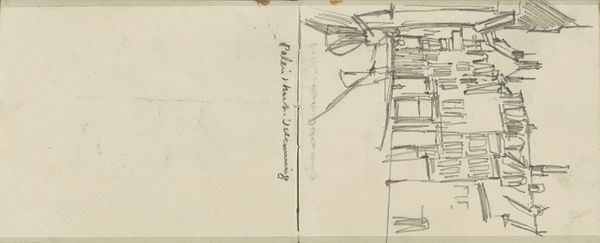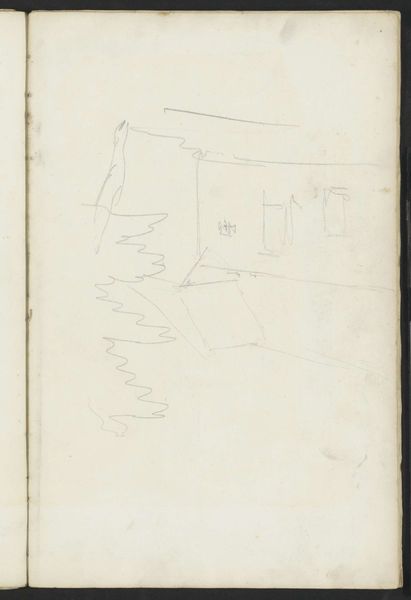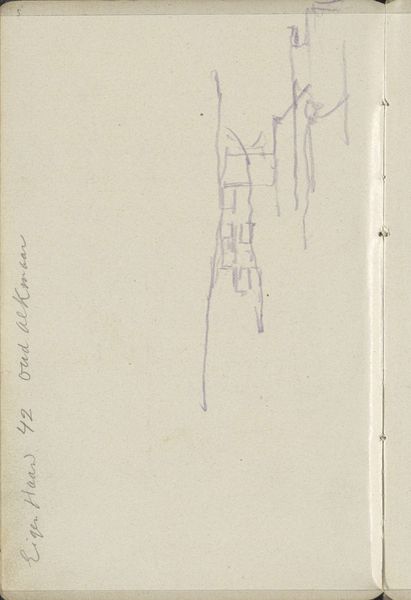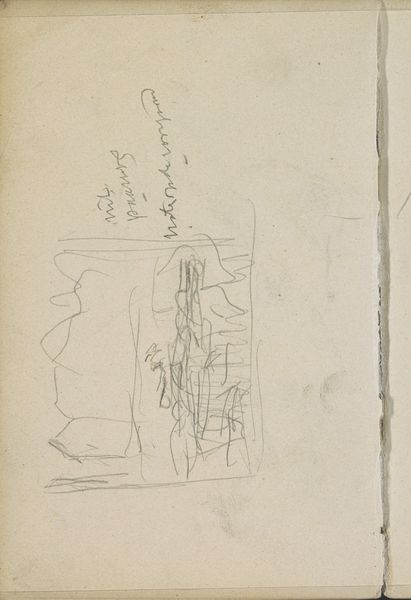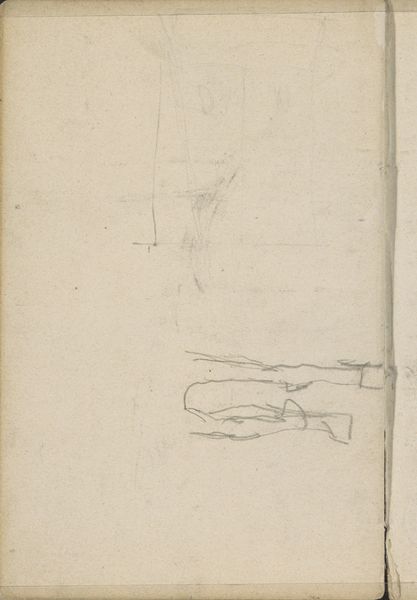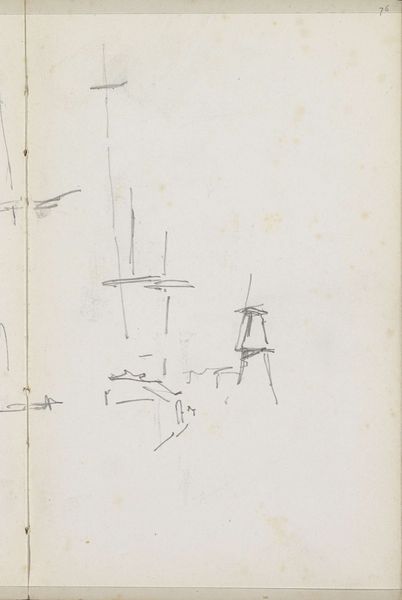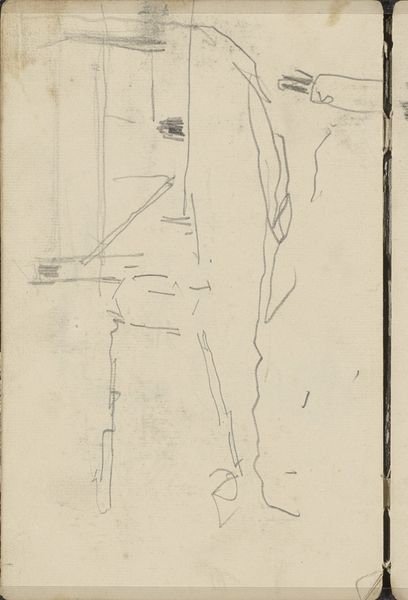
drawing, pencil
#
drawing
#
amateur sketch
#
light pencil work
#
impressionism
#
sketch book
#
incomplete sketchy
#
hand drawn type
#
landscape
#
personal sketchbook
#
idea generation sketch
#
sketchwork
#
pencil
#
sketchbook drawing
#
sketchbook art
Copyright: Rijks Museum: Open Domain
Curator: Here we have George Hendrik Breitner's pencil drawing, "Waterpoort te Gorinchem," created between 1880 and 1882. Editor: It has a very immediate, almost skeletal quality. Spare and fragmented. It looks more like notes to oneself, lines suggesting forms rather than definitive statements. Curator: Exactly. This aligns with Breitner’s approach, emphasizing the working process, showing art's making. Look how the lines articulate the bare structure of the gate; it's less about aesthetic beauty and more about a preliminary step in image production. Perhaps studies for a later painting or etching. We see him exploring spatial relationships with minimal materials. Editor: Which, contextually, feels resonant. In a period when Dutch society experienced immense social shifts, Breitner is seemingly capturing the pulse, or ghost of it, of urban space during late 19th-century transformations. It acknowledges that spaces hold histories, class dynamics, power structures; but through absence and omission—perhaps reflecting social erasure? Curator: I'm more struck by the sheer economy of means. Breitner efficiently conveys depth and perspective with just a handful of lines, focusing intensely on capturing the Waterpoort's architectural structure through the simplest process. Think about how much drawing materials became industrialized around that time, and here, Breitner's emphasizing the raw potential locked within those simple tools of pencil and paper. Editor: And perhaps, by extension, who had access to those tools and how the act of 'sketching' might've served a privileged class of budding artists versus others... were there social inequalities shaping the consumption and creation of such preparatory sketches at that point? Who decides which ones become recognized artistic works? Curator: Food for thought. The piece offers us an almost deconstructed, bare-bones view of his working practice. He gives visibility to an idea at its initial state. Editor: Breitner pushes beyond conventional landscape renderings toward impressionistic moments filtered through subjectivity and maybe sociopolitical implications relating back to his surrounding reality, and in doing so questions representation, erasure, visibility within artistic circles themselves at that time, not simply spatial depictions. Curator: So, on one level, we witness architectural representation, on another, it’s about demystifying labor itself in art creation and acknowledging his means of image production. Editor: Precisely, it speaks about both historical contexts and modern perspectives on Dutch culture at large... something even this sparse sketch provides a starting point.
Comments
No comments
Be the first to comment and join the conversation on the ultimate creative platform.


